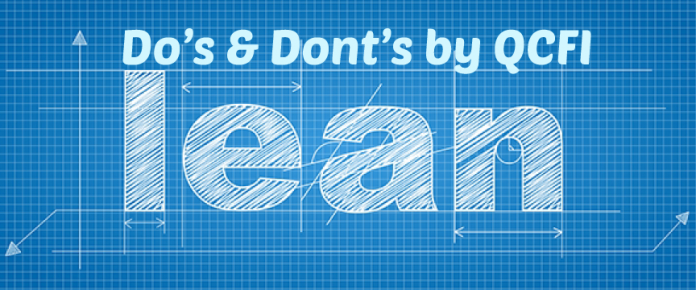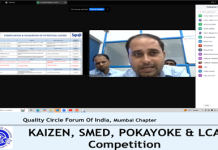Implementing Lean, or any change initiative is difficult. If it wasn’t, everyone would be doing it, and they’re not. Lean is not easy. It’s not easy to understand. It’s not easy to implement. And it’s especially not easy to sustain. But anyone who has embarked on a so- called lean journey already knows this. Lean, in fact, is hard work and it’s a challenge to keep it
going.
The following list of do’s and don’ts is aimed at focusing on the right things.
Do have an implementation strategy. Companies must determine ahead of time what the vision and direction will be. A proper strategy must assign clear responsibilities and show what resources are to be committed. Metrics and timelines must be defined. Management must decide what core elements are to be deployed and the order of deployment. They also must determine where to start and how Lean will expand throughout the operation. Finally, the strategy should anticipate problem and recovery scenarios. This is critical. Companies can fail by attempting too much. They also can fail by attempting too little
and assigning the initiative to a “backburner” status.
Do find a Lean coach. A Lean coach brings a range of experiences from previous Implementations that can help you to ensure that your implementation will be smooth and efficient. A good Lean coach should be continuously pushing your company.
Do develop a value stream map to differentiate the value added steps of a process from the non-value added steps, sum the time for each individual step and determine how much time is given to a process.
Do engage employees in transformation. Employee participation in project decision making is a main principle affecting innovation, productivity, and work satisfaction. Workers typically have more complete knowledge of their work than does management; hence, if workers participate in decision making, decisions will be made with better pools of information.
Don’t focus on too lmplementation. Tools do not solve problem but rather people do. It is not about the tools it’s how they are applied. A large number of organizations have failed to produce the desired results from the direct and prescriptive application of Lean tools. The tools themselves have been proven to work in many situations. The difference must then be in how the tools were applied, their appropriateness, but not the tools themselves.
Don’t optimize a bad process. Ensure current and future processes are accounted for when implementing lean initiatives.
Don’t just set it and forget it. It is important to continually re-evaluate your lean manufacturing efforts. Even when you take the long-term into consideration, changes in your business plan, demand levels and industry trends can create possibilities to further improve your factory.
Don’t blindly copy others. Some enterprises think they will get desirable effects by applying Lean tools that others have gotten great achievements. Successful implementation of any Lean tool must be closely related to the management philosophy. So we can’t succeed by imitating and copying practices of others indiscriminately, it must be combined with local culture.Lean is not a quick fix and you cannot pick and choose the tools you use. The key to ongoing success is to embed Lean as a philosophy, and a requirement in everybody’s role; ensuring the right levels of line- management responsibility and accountability for gradually implementing the various tools and techniques that support it.
Learning is the key to success—some would even say survival—in today’s organizations. Knowledge should be continuously enriched through both internal and external learning. Learning needs to become part of your daily routine. You are most likely to succeed if you consistently pursue a learning activity each day. Keep learning











